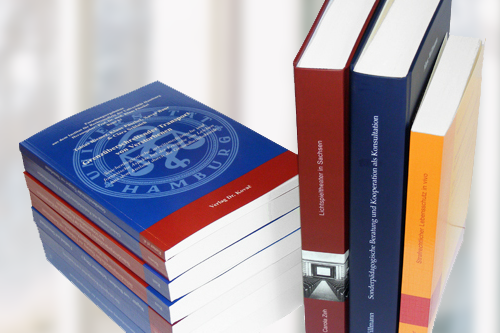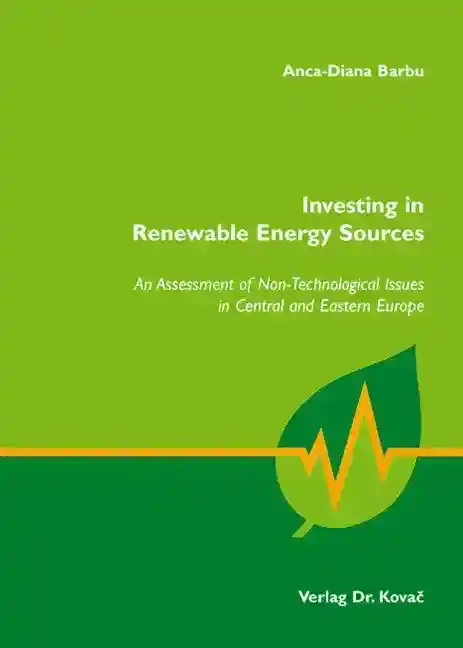Anca-Diana BarbuInvesting in Renewable Energy Sources
An Assessment of Non-Technological Issues in Central and Eastern Europe
Wirtschaftspolitik in Forschung und Praxis, Band 28
Hamburg 2007, 374 Seiten
ISBN 978-3-8300-2899-4 (Print) |ISBN 978-3-339-02899-0 (eBook)
Zum Inhalt
On May 1st 2004, the European Union has seen the most ambitious enlargement in its history in terms of expansion scale as well as political and economic challenges. With the accession process, the new Member States (NMS) assumed a double responsibility. On one hand, these countries will have to continue making efforts to catch up with Western Europe (EU-15) while, at the same time, taking on-board new responsibilities as fully fledged Members of the European Union. The challenge seems to be in improving the quality of the legislative framework and its enforcement, assessing the effects of market openness, and good governance- three important pillars of any reform process that are neither straightforwardly quantifiable, nor easily observable.
With respect to renewable energy sources, the new Member States adopted ambitious targets concerning the electricity production from renewable energy sources by 2010. In the author’s view, the main drivers to increase the production of electricity generated from renewable energy sources in the new Member States should be linked with key priorities of the European energy policy, namely security of supply and reduction of GHG emissions and with the Lisbon long-term strategic goal to transform the European internal market into one of the most competitive and dynamic markets capable to deliver sustainable development. How feasible it is for these countries to meet their targets, under which circumstances, and which technologies are more likely to be deployed in short to medium term? These are all questions addressed in some detail in this paper, in most cases in comparison with what can be observed in the EU-15. In addition, some investment issues are addressed, in particular concerning the specific risks associated with RES-E investments and innovative financing mechanisms such as the use of EU Structural Funds for risk capital financing. The analysis in this paper is complemented with results from a series of case studies based on the simulation model, ADMIRE-REBUS.
The main conclusion stemming from this analysis is that the enterprise of promoting renewable energy sources in Central and Eastern Europe is likely to take place, at least in the short to medium term, in a fast changing environment where macroeconomic stabilisation is yet to be achieved, where the role of the State as well as of local authorities is being redefined and where competitive measures are still to be designed to facilitate easy market entry and exit. In addition, the region is likely to remain, at least until 2010, diverse as different countries have had a different economic and political starting point and have chosen different pathways to establish a market economy. Consequently, there seem to be no one recipe for success and as such, attention should be paid instead to the soundness and the consistency of the political processes aiming to achieve macroeconomic stability and sustainable development, the rule of law and mechanisms to enforce it, and enforceability of property rights.
Link der Autorin
Schlagworte
EnergieversorgungErneuerbare EnergienGlobalisierungKlimawandelNachhaltigkeitOsteuropaProperty RightsSustainabilityVolkswirtschaftslehreWeltklimaWirtschaftspolitikIhr Werk im Verlag Dr. Kovač

Möchten Sie Ihre wissenschaftliche Arbeit publizieren? Erfahren Sie mehr über unsere günstigen Konditionen und unseren Service für Autorinnen und Autoren.
